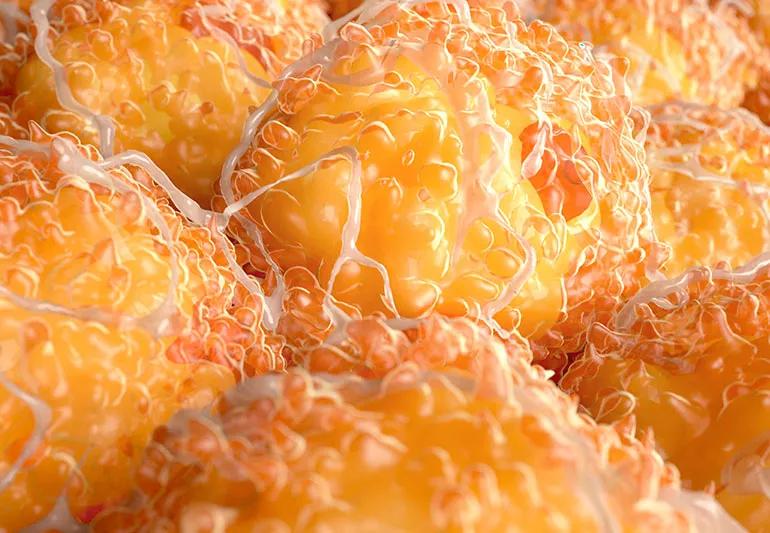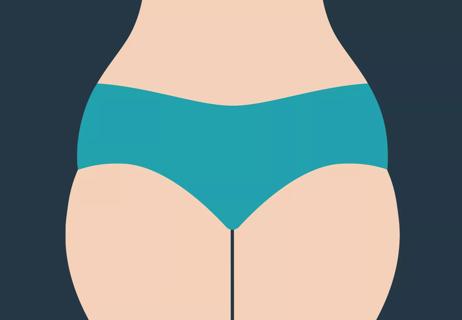Discover why one kind of fat can be fatal

Body fat gets a bad rap, but you’d die without it. Your body fat stores crucial energy, provides insulation, protects your internal organs and even helps hold your cells together.
Advertisement
Cleveland Clinic is a non-profit academic medical center. Advertising on our site helps support our mission. We do not endorse non-Cleveland Clinic products or services. Policy
According to endocrinologist and diabetes specialist Elena Borukh, MD, body fat can be good, depending on which kind and how much we’re talking about.
“But, don’t let any of these be a green light to not eat healthy and exercise, because too much fat can also be fatal,” Dr. Borukh says.
Here’s everything you ever wanted to know about human body fat. Learn the different colors and what they mean. And which kind of fat can kill you — and what you can do about it.
A: Fat is functional. But too much of it can also be fatal. You can lose your excess body fat by exercising more and following a diet that is high in nutrients, protein and low in carbs and sugar.
According to the U.S. Center for Disease Control about 42.4% of American adults are overweight — an alarming statistic about the need to manage our fat intake.
A: You exhale it. Fat is metabolized into carbon dioxide and a little water. Aerobic exercise increases your exhalation rate, causing you to lose more fat.
A: That’s not all muscle. Your stomach is as hard as a rock because all the fat is packed under the abdominal wall. This is incredibly dangerous.
Not all fats are alike. The color of fat is largely linked to its function. Here are some more details that will have you thinking about how to manage the fat that develops in your body.
Advertisement
Most fat cells in your body are white. These cells soak up dietary fat and store it for future energy needs. But they can also keep growing and growing. Feed these cells too much dietary fat, and they will keep getting bigger – growing and growing to the point of dangerous dysfunction.
Truthfully, most of those white cells really look yellow. Why? Because humans can’t quickly metabolize the yellow carotene found in vegetables and grains. So carotene migrates to our fat cells and settles there.
Ew! Yes, we have brown fat cells. These fat cells interact with white fat cells to burn energy in cold weather and create heat. Lean people have more brown fat than non-lean people. Some scientists think that if they can find a way to stimulate brown fat cells, they can help people lose weight.
Beige fat cells are also mixed in with white fat. We actually have more beige fat than brown fat. Beige fat cells are inactive until you get cold. Then they start burning energy like brown fat cells, only not as well. Beige cells are being studied for their potential to help regulate insulin and protect organs like the liver.
Excessive body fat is linked to heart attacks, diabetes, stroke, breast cancer and many other conditions. The bottom line is, it’s dangerous, according to Dr. Borukh. When it grows behind and pushes out your abdominal wall, it causes the classic “pot belly.” It also packs itself around internal organs and pumps in harmful chemicals that throw your metabolism off balance with disastrous effects.
“You are in charge of the way your body takes in and stores the fats found in food, and preventing excess fat storage,” Dr. Borukh says. “So make sure to eat right and exercise to keep too much fat to a minimum. Keep your unhealthy fat intake under control and eat enough good fats in your diet to maintain the right balance of fat in your body.”
Advertisement
Learn more about our editorial process.
Advertisement

Visceral fat surrounds your organs and can be more detrimental to your health

Some treatments may temporarily reduce the appearance of puckered and dimpled skin

Fat exits your body in your breath, pee and sweat

Weight gain is natural as we age — but it can be cause for concern

Seeing double (chins) when taking selfies? From exercises to surgery, you can reduce or eliminate chin fat, but there’s no overnight solution

The short answer from a medical weight management expert

It’s commonly mistaken for obesity

It helps to take a long-range view

Start having sex about 72 hours before ovulation, then at least every other day during your fertile window

Attachment theory suggests that your earliest relationships shape connections throughout your life

It isn’t a recognized mental health disorder, but research shows that problematic social media use can negatively affect your mental health, self-esteem and sleep